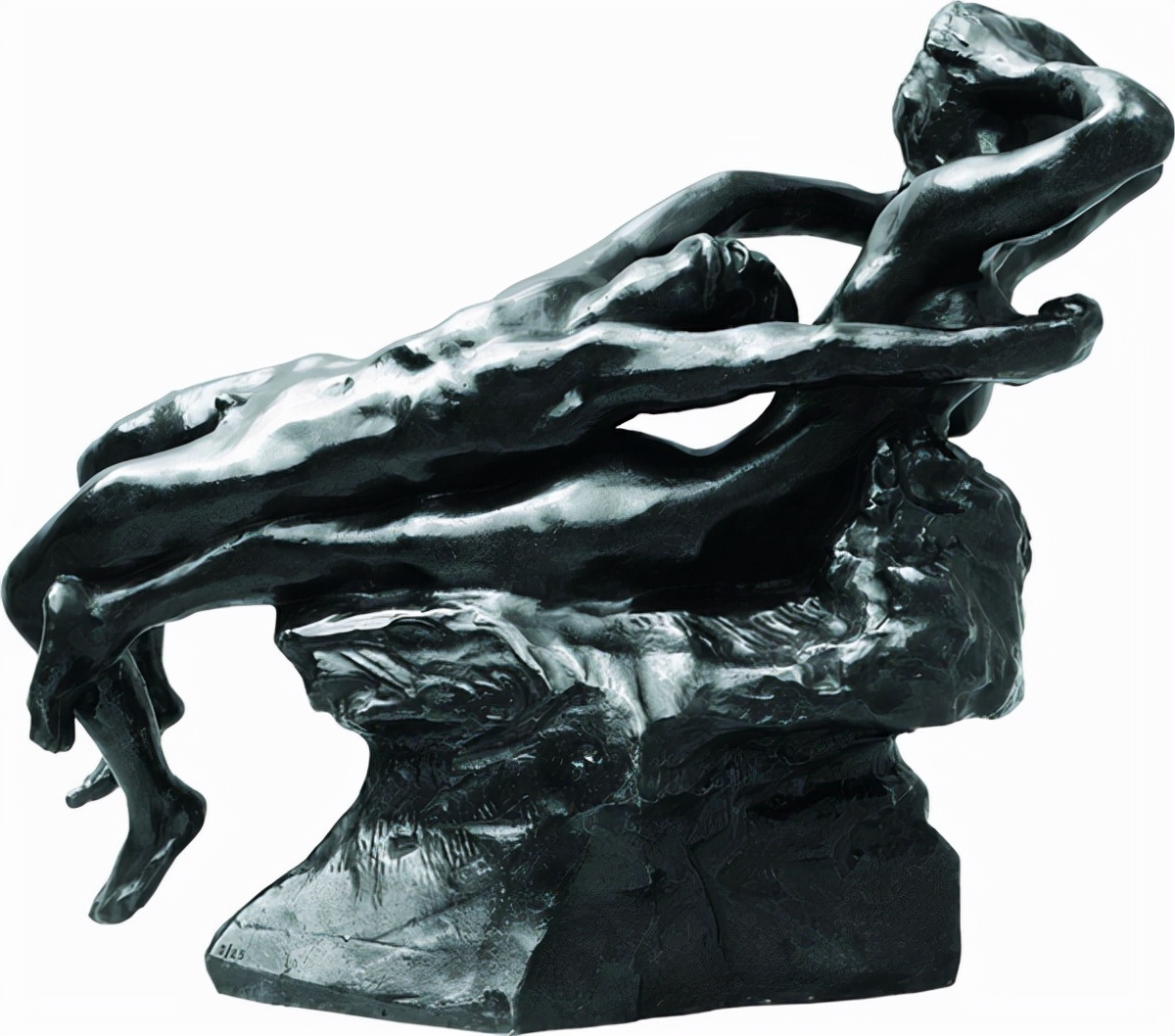2021/11/11

Lost Love, before 1887
The fountain of life is a surge from the heart; the flower of life opens from the inside out. Similarly, there is often a strong inner flutter lurking in beautiful sculptures, which is the charm of ancient art. --- Rodin
Lost Love is one of the most attractive sculptures in Hell's Gates. Rodin placed two pieces of Lost Love in The Gates of Hell, one at the bottom right of the door panel and prominently in the center of the right side of the panel. (Aliases: "Dream", "Night", "Dawn", "Arrival", etc.) "Lost Love" is the most well-known, literally translated as "Running Away Love")
It was first exhibited in 1887. Two extremely tense bodies merge very smoothly. Men and women play different roles here: the seductress' beauty and lust lead men to depravity, showing fleeting love that is difficult to grasp, showing an atmosphere of emptiness and loneliness. The woman clutched her hair with both hands, her face and expression hidden, the strong exaggerated body lines showed pain and desperate gesture of wanting to escape, and her body was soft and energetic, full of strength. The statue of the man is inverted, protruding beyond the plane, the head is thrown back, the arms are also extended to the rear, as if trying to hold and grasp firmly, the body is stiff as death and loses vitality. The two bodies are intertwined, the viewer's gaze flows over the torso, the man and the woman are entangled, tearing, resisting, as if there is a gasping sound, a cry of pain is heard, and the combination of the two bodies, symbolizing life and death at the same time, is impressive and falls into deep thought.
By Auguste Rodin
Occupation: Sculptor
Graduated: November 12, 1840 - November 17, 1917
Representative works: "The Thinker", "The Righteous People of Calais", "The Bronze Age", "Hands", "Hugo", "Kiss", "Balzac" and so on
Auguste Rodin (1840–1917)
Born in 1840 to a family of ordinary clerks in Saint-Marcel, Paris, France, François Auguste Rodin completed his primary education and entered the Royal Academy of Painting and Mathematics to study painting with the rigorous academic painter Le Cocque de Bois Bauard, at the same time first exposed to sculpture and fell in love with the art. After leaving school with the first place in the painting competition, he failed to apply for the Paris Academy of Fine Arts for 3 consecutive years, so he gave up the dream of continuing his studies and embarked on the road of freelance sculptor, so he was not as conservative and stubborn as other artists at that time, but strived for authenticity and innovation.
In 1860, at the age of 20, Rodin completed his first sculpture, a bust of his father. In 1864, Rodin was given the opportunity to attend an animal anatomy class taught by the animal sculptor Anthony Louis Barry at the National Museum of Natural History, which broadened his sculptural skills in expressing precise anatomical details and dynamic tension. In the years that followed, Rodin worked with sculptor Garrieux Belles to create some decorative sculptures in Brussels, Belgium, an experience that gave him an insight into the way the workshops worked. In 1875, Rodin went to Italy to study, and the full version of "The Man with the Broken Nose" was exhibited at the Paris Salon Exhibition, and his sculptural art was recognized for the first time. In 1876, bronze age was exhibited, and as Rodin gained more and more praise in the art world, his sculptures entered the "Golden Age". During this period, hugo (1883), The Righteous People of Calais (1884), Vikuna Markner and General Lynch (1886), Kiss (1888), Balzac (1891) and other important works were published, which made Rodin a hit.
Hell's Gate is his most famous work, which cost Rodin his life's work, and from his commission in 1880 until his death in 1917, the sculpture did not have time to cast a complete bronze work. Although it was not finally completed, he created many masterpieces such as "The Thinker", "Danaai", "Adam", "Eve", "Eternal Spring", "Lost Love" and so on. In 1900, on the occasion of the Paris World's Fair, Rodin held his first solo exhibition. The exhibition was a sensation and was attended by artists, collectors, art lovers and journalists from around the world. Since then, Rodin has become a world-renowned sculptor. He has created a wealth of works, nearly 200 bronze works, marble, plaster, terracotta and other works about 100 pieces. Rodin died in November 1917 after donating all his works to the state.
Rodin's sculptural art is difficult to define in a genre, and the solid skills of classicism, the creative themes of realism, the passionate expression of romanticism, and even the visual perception of Impressionism are all reflected in his works.